Designing Embedded Systems with PIC Microcontrollers: Principles & Applications
Original price was: ₹5,400.14.₹4,320.11Current price is: ₹4,320.11.
ISBN: 9780750667555
Author/Editor: Tim Wilmshurst
Publisher: Newnes
Year: 2007
2 in stock (can be backordered)
Description
Embedded Systems with PIC Microcontrollers: Principles and Applications is a hands-on introduction to the principles and practice of embedded system design using the PIC microcontroller. Packed with helpful examples and illustrations, the book provides an in-depth treatment of microcontroller design as well as programming in both assembly language and C, along with advanced topics such as techniques of connectivity and networking and real-time operating systems. In this one book students get all they need to know to be highly proficient at embedded systems design. This text combines embedded systems principles with applications, using the16F84A, 16F873A and the 18F242 PIC microcontrollers. Students learn how to apply the principles using a multitude of sample designs and design ideas, including a robot in the form of an autonomous guide vehicle. Coverage between software and hardware is fully balanced, with full presentation given to microcontroller design and software programming, using both assembler and C. The book is accompanied by a companion website containing copies of all programs and software tools used in the text and a ‘student’ version of the C compiler. This textbook will be ideal for introductory courses and lab-based courses on embedded systems, microprocessors using the PIC microcontroller, as well as more advanced courses which use the 18F series and teach C programming in an embedded environment. Engineers in industry and informed hobbyists will also find this book a valuable resource when designing and implementing both simple and sophisticated embedded systems using the PIC microcontroller
Additional information
| Weight | 1.134 kg |
|---|
Product Properties
| Year of Publication | 2007 |
|---|---|
| Table of Contents | Section 1 Getting started with embedded systems Tiny computers, hidden control 1 The main idea-embedded systems in today's world 2 Some example embedded systems 3 Some computer essentials 4 Microprocessors and microcontrollers 5 Microchip and the PIC microcontroller 6 An introduction to PIC microcontrollers using the 12 series 7 What others do- a Freescale microcontroller Summary References Section 2 Minimum systems and the PIC 16F84A 2. Introducing the PIC 16 series and the 16F84A 2.1 The main idea- the PIC 16 series family 2.2 An architecture overview of the 16F84A 2.3 A review of memory technologies 2.4 The 16F84A memory 2.5 Some issues of timing 2.6 Power up and reset 2.7 What others do- the Atmel AT89C2051 2.8 Taking things further- the 16F84A on-chip reset circuit Summary References Parallel ports, power supply and the clock oscillator View less > 1 The main idea- parallel input/output View less > 2 The technical challenge of parallel input/output View less > 3 Connecting to the parallel port View less > 4 The PIC 16F84A parallel ports View less > 5 The clock oscillator View less > 6 Power supply View less > 7 The hardware design of the electronic ping-pong Summary References View less > Starting to program- an introduction to Assembler View less > 1 The main idea- what programs do and how we develop them View less > 2 The PIC 16 series instruction set, with a little more on the ALU View less > 3 Assemblers and the assembler format View less > 4 Creating simple programs View less > 5 Adopting a development environment View less > 6 An introductory MPLAB tutorial View less > 7 An introduction to simulation View less > 8 Downloading the program to a microcontroller View less > 9 What others do- a brief comparison of CISC and RISC instruction sets View less > 10 Taking things further- the 16 series instruction set format Summary References View less > Building assembler programs View less > 1 The main idea- building structured programs View less > 2 Flow control- branching and subroutines View less > 3 Generating time delays and intervals View less > 4 Dealing with data View less > 5 Introducing logical systems View less > 6 Introducing arithmetic instructions and the Carry flag View less > 7 Taming assembler complexity View less > 8 More use of the MPLAB simulator View less > 9 The ping-pong program View less > 10 Simulating the ping-pong program- tutorial View less > 11 What others do- graphical simulators Summary References View less > Working with time: interrupts, counters & timers View less > 1 The main idea- interrupts View less > 2 Working with interrupts View less > 3 The main idea- counters and timers View less > 4 Applying the 16F84A Timer 0, with examples using the electronic ping-pong View less > 5 The watchdog timer View less > 6 Sleep mode View less > 7 What others do View less > 8 Taking things further- interrupt latency Summary References View less > Section 3 Larger systems & the PIC 16F873A 7. Larger systems and the PIC 16F873A 7.1 The main idea- the PIC 16F87XA 7.2 The 16F873A block diagram and CPU 7.3 16F873A memory and memory maps 7.4 'Special' memory operations 7.5 The 16F873A interrupts 7.6 The 16F873A oscillator, reset and power supply 7.7 The 16F873A parallel ports 7.8 Test, commission and diagnostic tools 7.9 The Microchip in-circuit debugger (ICD2) 7.10 Applying the 16F873A: the Derbot AGV 7.11 Downloading, testing and running a simple program with ICD 2 7.12 Taking things further- the 16F874A/16F877A Summary References The human and physical interfaces View less > 1 The main idea- the human interface View less > 2 From switches to keypads View less > 3 LED displays View less > 4 Liquid crystal displays View less > 5 The main idea- interfacing to the physical world View less > 6 Some simple sensors View less > 7 More on digital input View less > 8 Actuators: motors and servos View less > 9 Interfacing to actuators View less > 10 Building up the Derbot View less > 11 Applying sensors and actuators- a 'blind' navigation Derbot program Summary References View less > Taking timing further View less > 1 The main ideas- taking counting and timing further View less > 2 The 16F87XA Timer 0 and Timer 1 View less > 3 The 16F87XA Timer 2, comparator and PR2 register View less > 4 The capture/compare/PWM (CCP) modules View less > 5 Pulse width modulation View less > 6 Generating PWM in software View less > 7 PWM used for digital-to-analog conversion View less > 8 Frequency measurement View less > 9 Speed control applied to the Derbot View less > 10 Where there is no timer View less > 11 Sleep mode View less > 12 Where do we go from here? View less > 13 Building up the Derbot Summary References View less > Starting with serial View less > 1 The main idea- introducing serial View less > 2 Simple serial links- synchronous data communication View less > 3 The 16F87XA Master Synchronous Serial Port (MSSP) module in SPI mode View less > 4 A simple SPI example View less > 5 The limitations of Microwire and SPI, and of simple synchronous serial transfer View less > 6 Enhancing synchronous serial, and the Inter-Integrated Circuit bus View less > 7 The MSSP configured for IC View less > 8 IC applied in the Derbot AGV View less > 9 Evaluation of synchronous serial data communication View less > 10 The 16F87XA Addressable Universal Synchronous Asynchronous Receiver Transmitter (USART) View less > 11 Implementing serial with a serial port- 'bit banging' View less > 12 Building up the Derbot Summary References View less > Data acquisition and manipulation View less > 1 The main idea- analog and digital quantities, their acquisition and use View less > 2 The data acquisition system View less > 3 The PIC 16F87XA ADC module View less > 4 Applying the ADC in the Derbot light meter program View less > 5 Some simple data manipulation techniques View less > 6 The Derbot light-seeking program View less > 7 The comparator module View less > 8 Applying the Derbot circuit for measurement purposes View less > 9 Configuring the Derbot AGV as a light-seeking robot Summary References View less > Section 4 Smarter systems and the PIC 18FXX2 12. Smarter systems and the PIC 18FXX2 12.1 The main idea- the PIC 18 series and the 18FXX2 12.2 The 18F2X2 block diagram and Staus register 12.3 The 18 series instruction set 12.4 Data memory and Special Function Registers 12.5 Program memory 12.6 The Stacks 12.7 The interrupts 12.8 Power supply and reset 12.9 The oscillator sources 12.10 Introductory programming with the 18F242 Summary References 13 The PIC 18FXX2 peripherals 13.1 The main idea- the 18FXX2 peripherals 13.2 The parallel ports 13.3 The timers 13.4 The capture/compare/PWM (CCP) modules 13.5 The serial ports 13.6 The analog-to-digital converter (ADC) 13.7 Low-voltage detect 13.8 Applying the 18 series in the Derbot-18 13.9 The 18F2420 and the extended instruction set Summary References 14 Introducing C 14.1 The main idea- why C? 14.2 An introduction to C 14.3 Compiling the C program 14.4 The MPLAB C18 compiler 14.5 A C18 tutorial 14.6 Simulating a C program 14.7 A second C example- the Fibonacci program 14.8 The MPLAB C18 libraries 14.9 Further reading Summary References 15 C and the embedded environment 15.1 The main idea- adapting C to the embedded environment 15.2 Controlling and branching on bit values 15.3 More on functions 15.4 More branching and looping 15.5 Using the timer and PWM peripherals Summary References 16 Acquiring and using data with C 16.1 The main idea- using C for data manipulation 16.2 Using the 18FXX2 ADC 16.3 Pointers, arrays and strings 16.4 Using the IC peripheral 16.5 Formatting data for display Summary References 17 More C and the wider C environment 17.1 The main idea- more C and the wider C environment 17.2 Assembler inserts 17.3 Controlling memory allocation 17.4 Interrupts 17.5 Example with interrupt on overflow- flashing LEDs on the Durbot 17.6 Storage classes and their application 17.7 Start-up code: c018i.c 17.8 Structures, unions and bit-fields 17.9 Processor-specific header files 17.10 Taking things further- the MPLAB Linker and the .map file Summary References 18 Multi-tasking and the Real Time Operating System 18.1 The main ideas- the challenge of multi-tasking and real time 18.2 Achieving multi-tasking with sequential programming 18.3 The Real Time Operating System (RTOS) 18.4 Scheduling and the scheduler 18.5 Developing tasks 18.6 Data and resource protection- the semaphore 18.7 Where do we go from here? Summary References 19 The Salvo Real Time Operating System 19.1 The main idea- Salvo, an example RTOS 19.2 Configuring the Salvo application 19.3 Writing Salvo programs 19.4 A first Salvo example 19.5 Using interrupts, delays and semaphores with Salvo 19.6 Using Salvo messages and increasing RTOS complexity 19.7 A program example with messages 19.8 The RTOS overhead Summary References Section 5 Techniques of connectivity and networking 20 Connectivity and networks 20.1 The main idea-networking and connectivity 20.2 Infrared connectivity 20.3 Radio connectivity 20.4 Controller Area Network (CAN) and Local Interconnect Network (LIN) 20.5 Embedded systems and the Internet 20.6 Conclusion Summary References Appendix 1 The PIC 16 series instruction set Appendix 2 The electronic ping-pong Appendix 3 The Derbot AGV- hardware design details Appendix 4 Some basics of Autonomous Guided Vehicles Appendix 5 PIC 18 series instruction set (non-extended) Appendix 6 Essentials of C |
| Author | Tim Wilmshurst |
| ISBN/ISSN | 9780750667555 |
| Binding | Paperback |
| Edition | 1 |
| Publisher | Newnes |
You must be logged in to post a review.

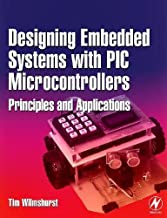
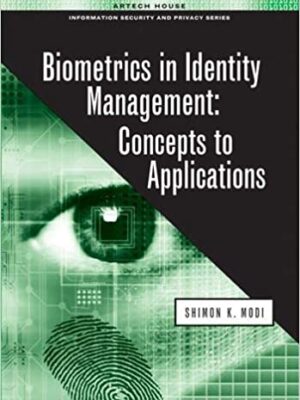
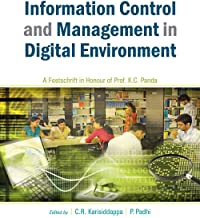
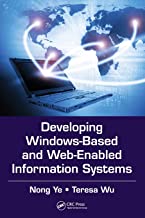
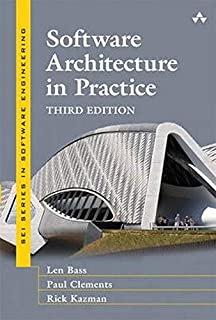
Reviews
There are no reviews yet.